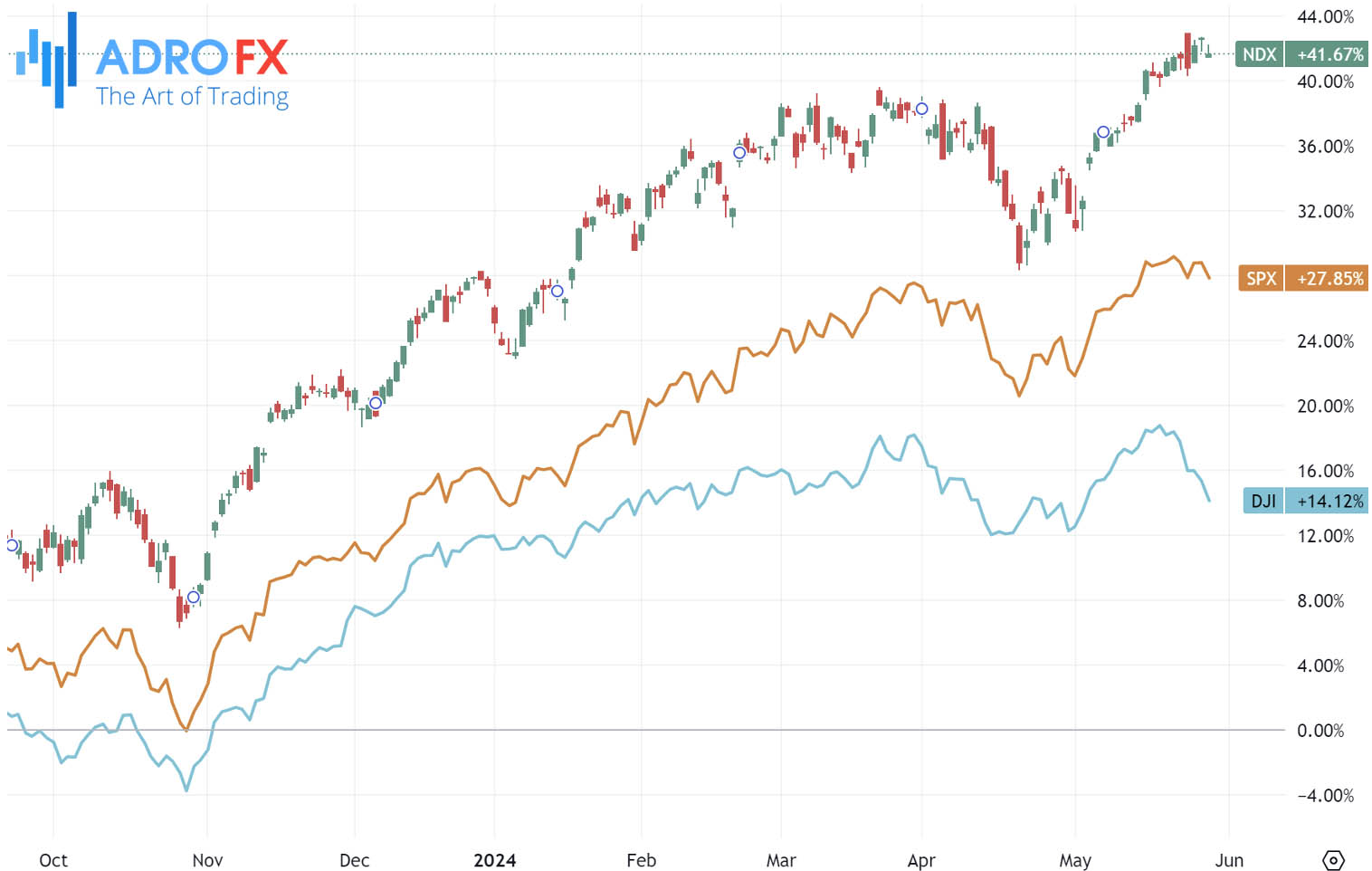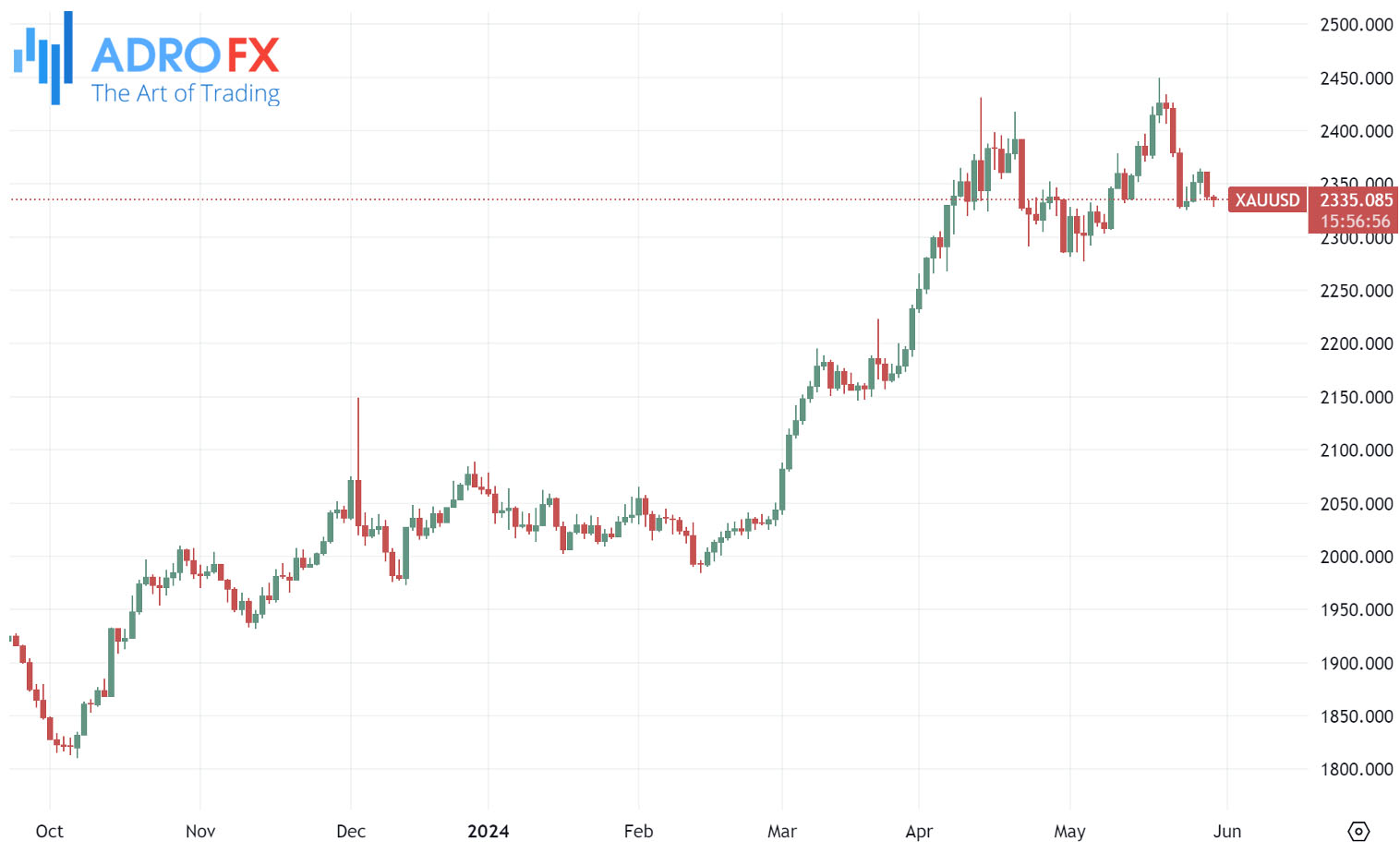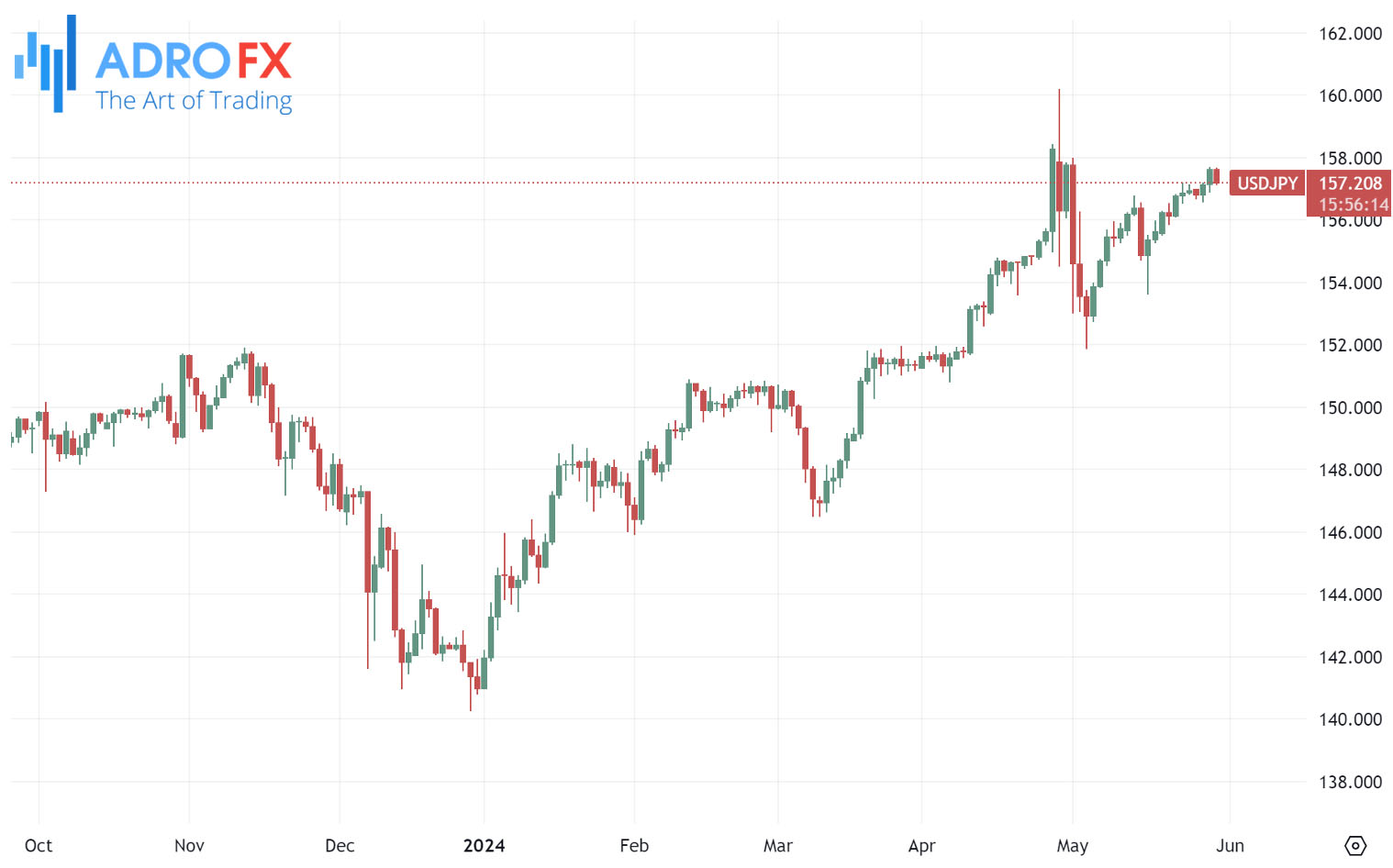Dow Drops Sharply Amid Rising Treasury Yields and Industrial Weakness; Market Awaits Key Inflation Data | Daily Market Analysis

Key events:
- USA - GDP (QoQ) (Q1)
- USA - Initial Jobless Claims
- USA - Crude Oil Inventories
- USA - FOMC Member Williams Speaks
The Dow closed sharply lower on Wednesday, influenced by rising Treasury yields and weakness in industrial stocks, particularly airlines, which dropped significantly due to demand concerns after American Airlines revised its Q2 profit guidance downward.
The Dow Jones Industrial Average fell by 411 points or 1.1%, the S&P 500 decreased by 0.8%, and the NASDAQ Composite declined by 0.6%.

Treasury yields continued to rise after a series of disappointing auction results, signaling weaker demand for government bonds, including the $44 billion of 7-year notes auctioned on Wednesday.
The increase in Treasury yields comes ahead of key inflation data expected this week. The PCE price index, the Federal Reserve’s preferred measure of inflation, is due this Friday and is likely to impact the central bank’s outlook on interest rates. Persistent inflation has led several officials to recently indicate that they need more evidence of cooling prices before considering reducing rates from their current two-decade highs.
Gold prices traded lower on Thursday, affected by a stronger US Dollar and rising US yields. The decreased expectation of a Federal Reserve rate cut in September is putting selling pressure on gold, as higher interest rates increase the opportunity cost of holding the precious metal.

Investors are closely watching the second estimate of the US GDP for Q1 2024, due on Thursday. A stronger-than-expected GDP reading could further strengthen the USD and negatively affect the USD-denominated gold price. However, ongoing geopolitical tensions in the Middle East may support traditional safe-haven assets like gold. Additionally, rising demand from central banks could limit the downside for gold in the near term.
The Japanese Yen reversed its recent losses on Thursday, buoyed by comments from Bank of Japan board member Seiji Adachi. Adachi emphasized the gradual reduction in bond purchases to ensure that long-term yields accurately reflect market conditions. He also indicated that raising interest rates could be justified if a weaker yen leads to higher inflation, as reported by Reuters.

Traders are increasingly anticipating another interest rate hike from the BoJ. All eyes are now on Tokyo's inflation data, set to be released on Friday, which is considered a crucial indicator of nationwide price trends.
The NZD/USD pair slipped to around 0.6105 during Thursday's Asian session. The release of New Zealand's budget outline for the 2024 fiscal year had minimal impact on the Kiwi, as the pair remains influenced by the dynamics of the US Dollar. New Zealand Finance Minister Nicola Willis stated that the Treasury expects inflation to drop below 3% by Q3 2024 and ease to 2% by 2026. The Treasury also forecasts a contraction in NZ GDP for H1 2024, with growth resuming in H2 2024.

Additionally, New Zealand projected a budget deficit of NZ$11.07 billion for the fiscal year ending June 30, 2024, exceeding the previous estimate of NZ$9.32 billion made in December. The government aims to return to an operating balance surplus by 2027/28.
The Australian Dollar experienced a rebound on Thursday, likely influenced by a rise in the Australian 10-year Government Bond Yield, which reached a four-week peak of 4.52%. This development suggests that investors believe the Reserve Bank of Australia will maintain higher interest rates for an extended period. Additionally, the AUD benefited from China's decision to lift bans on beef imports from five major Australian meat producers, as reported by Bloomberg.

Australia's Monthly Consumer Price Index, published on Wednesday, showed robust results that might lead the RBA to contemplate another rate hike. Minutes from the RBA's May policy meeting revealed that the central bank had considered a possible increase in interest rates.
The Fed Beige Book report, which covers economic activity from April to mid-May, showed slight national economic growth with varied conditions across different industries and regions. Employment saw a modest rise, wage growth was moderate, and prices increased slightly as consumers resisted further price increases.
Investors are proceeding with caution ahead of Thursday's release of the US Gross Domestic Product Annualized (Q1) data. Market participants are also keenly awaiting the Core PCE Price Index data set for release on Friday, which is expected to offer insights into the Federal Reserve's potential decisions regarding interest rate changes.









